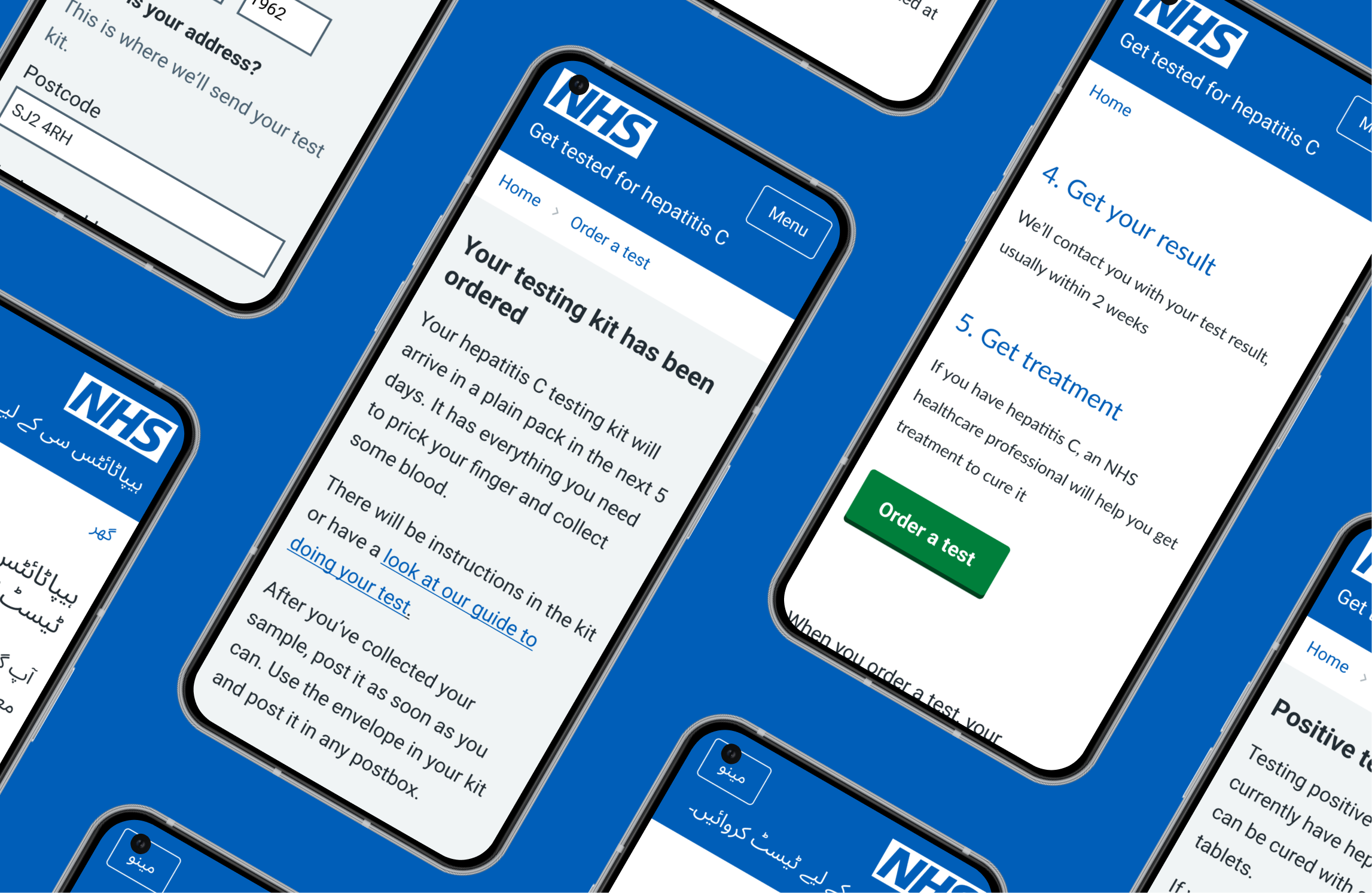What happens when service design meets a major public health challenge? The journey to combat Hepatitis C in the UK is a testament to the power of strategic design in addressing complex health issues. This project wasn't just about finding a solution; it was about reshaping how healthcare approaches such challenges, bringing a unique blend of empathy, innovation, and thorough research to the forefront.
Unraveling the Complexity of Hepatitis C
Our engagement with NHS England was driven by a pressing need to address the Hepatitis C crisis, impacting over 118,000 individuals in the UK as of 2019. This mission was more than a healthcare project; it was a bold statement against a disease that had lingered in the shadows for too long. Our goal was ambitious but clear: eradicate Hepatitis C by 2025, setting a precedent for global health initiatives and demonstrating the potential of strategic design in healthcare.

The Foundation of Success: In-Depth Research and Understanding
Our first and most crucial step was to immerse ourselves in extensive research. We needed to understand the virus from every angle – its medical implications, societal perceptions, and the stigmas attached to it. This phase was about listening – to patients, healthcare providers, and experts – to build a foundation based on real experiences and challenges. It was this deep understanding that shaped our strategy, allowing us to debunk myths and address the real needs of those affected by Hepatitis C.
A User-Centric Approach: Design Thinking at Its Best
The adoption of a user-centric design thinking approach was instrumental in our project's success. We focused on developing a solution that was not just effective but also accessible and simple to use. A mobile-first strategy was adopted, ensuring that the solution was within reach for the majority of our target audience. This phase was about more than just design; it was about communication – ensuring that every aspect of the user experience was clear, straightforward, and empathetic.
Blueprinting the Service: Mapping a Comprehensive Journey
Service blueprinting was a critical phase in our journey. It involved meticulously mapping out the patient journey, from initial awareness about Hepatitis C to the follow-up and treatment post-testing. This process wasn't just about creating a seamless service experience; it was about integrating various stakeholders across the healthcare spectrum into a cohesive system. This comprehensive mapping ensured no gaps in the service, providing a smooth and supportive journey for the patients.

Measuring the Impact: Celebrating Tangible Results
Since its inception, the project has achieved remarkable outcomes:
1. The high return rate of test kits, with over 6,000 orders placed.
2. Balanced engagement across different gender and age groups, ensuring inclusivity.
3. Significant orders from non-English residents, showcasing the project's wide-reaching impact.
4. Strong participation from typically underrepresented communities, reflecting the project's success in reaching and resonating with a diverse audience.
These outcomes are a testament to the effectiveness of our approach, demonstrating that thoughtful service design can lead to real, measurable public health victories.
Continuous Improvement: A Journey Beyond Design
Our commitment to the project went beyond the initial design and launch. We recognized the importance of sustained engagement and continuous improvement in ensuring the long-term success of the service. Regular feedback loops and ongoing research have been integral in allowing us to iterate and refine the service, adapting to evolving user needs and healthcare dynamics.
Broader Implications: Setting New Standards in Healthcare
The Hepatitis C project in England is more than just a successful case study; it's a blueprint for tackling health challenges globally. The strategies and lessons learned here are not confined to one disease or one healthcare system; they offer a roadmap for addressing a variety of health issues across different contexts.
Conclusion
The journey to eliminate Hepatitis C in the UK is a compelling example of how innovative service design can reshape healthcare delivery and patient outcomes. It's a story of how empathy, strategic thinking, and collaborative efforts can lead to significant health improvements and set new standards for public health initiatives.
What elements of this case study can inform your healthcare initiatives? How can these strategies be adapted to meet the unique needs of your organisation or community?
Facing complex healthcare challenges requires a blend of innovation, strategic thinking, and deep understanding. If your organisation is grappling with similar issues, our expertise in healthcare system transformation through design thinking and service design can play a crucial role.
To explore how we can collaborate on your healthcare challenges and achieve impactful results, reach out to us.


.jpg)




.jpg)

